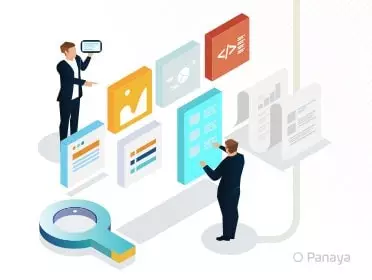Newell Rubbermaid
Newell Rubbermaid Cleans Up
with Its ERP 6.0 Upgrade
About
Newell Rubbermaid
Newell Rubbermaid, headquartered in Atlanta, Georgia has 22,500 employees and annual revenues of $6.4 billion. Newell Rubbermaid has been running SAP since 2007. A leader in the consumer products industry, Newell is an advanced SAP user running the latest versions of SAP’s flagship products. Newell counts on SAP’s NetWeaver platform to support its “customer-centric” business strategy.
The Challenge
Glenn Griffin, Global Director of Application Development, was under the proverbial gun. He and his team had until the “drop dead” date of September 23, 2009 to decide whether to officially commit to an ERP 6.0 upgrade during this year’s testing cycle. Newell Rubbermaid’s business users wanted access to the latest ERP 6.0 functionality, but if Mr. Griffin’s team didn’t meet the September 23 deadline, no dice – the upgrade would have to be postponed.
The technical teams had an agenda too: they wanted access to SAP’s ABAP Web Dynpro functionality. ERP 6.0 also promised a “no upgrades” future via SAP’s Enhancement Pack delivery. But if September 23 arrived with too many issues unresolved, Mr. Griffin’s team would revert back to ECC 5.0 and miss the upgrade window for 2009.
The Solution
Aware of the “no margin for error” timeframe, Mr. Griffin evaluated a range of upgrade support tools in the summer of 2009. Panaya’s value stood out. “It was apparent that Panaya was our best bet,” Mr. Griffin said.
“After having used Panaya and evaluated other tools, we still agree with that decision. The cost/benefit of Panaya was nothing compared to the money I would have shelled out for SAP consultants, the much longer timeline, and the project plan I would have had to go through with the traditional SAP methodology. No offense to SAP, they have a great methodology, but we were just moving way too fast.”
Panaya made an impression on Mr. Griffin during product evaluation. Panaya’s free report indicated there were about 4,300 issues in the system that needed to be addressed. He knew that his existing offshore team would be able to handle these fixes, smoothing the upgrade considerably. They chose Panaya. The best news? Using Panaya, Mr. Griffin’s team had a great chance to meet that September 23 “gut check” deadline. “I realized we could make those changes manually with the level of resources that I had, and we’d be able to slot it into this go live cycle,” recalls Mr. Griffin.
The Results
The total timeframe for the upgrade was two months (not including the testing – that part was pulled into Newell Rubbermaid’s scheduled testing cycle). Without Panaya, the upgrade would have taken twice as long. Why? Mr. Griffin points to the number of TPRs (Testing Report Problems) the development team had to deal with. In their 2007 upgrade, there were approximately 3,800 TPRs. In this upgrade? 172. Mr. Griffin credits Panaya for that 95% difference.
“The biggest benefit was that Panaya showed us the actual issues we needed to deal with,” says Griffin. “We have a lot of custom code. Panaya showed us where the changes were. I didn’t have to dig into the system; I could just bring up the code that needed to be changed and then send it on to testing.”
The Bottom Line
What Mr. Griffin’s team accomplished was not easy; others in the organization weren’t even sure it could be done. But they are believers now. “Everybody is very pleased, all the way from the CIO down,” says Mr. Griffin.
“We were not only on time; we slipped the upgrade in a year early. People were skeptical we could get it done, but after we did, everybody was very happy, pleased, and elated that it was done on such a short timeline.”
Our Latest
Resources
Guide

Greenfield Acceleration, Minus the Risk
Webinar On-Demand

Tips and Tricks for Successful UAT
Webinar On-Demand

Optimizing Your SAP ECC in a New Business Reality
